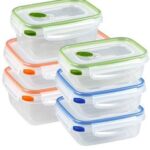Packaging for pharmaceutical products is critical for ensuring the safety, efficacy, and integrity of medications. Here are some key aspects of pharmaceutical packaging:
Protection and Preservation: Pharmaceutical packaging protects medications from various external factors that could affect their stability and potency, including moisture, light, oxygen, and contamination. This is crucial for maintaining the effectiveness of the medication throughout its shelf life.
Tamper Resistance: Packaging for pharmaceuticals often includes features to prevent tampering and ensure the integrity of the product. Tamper-evident seals, such as shrink bands or breakable caps, provide visible evidence if the package has been opened or compromised.
Child-Resistant Packaging: Many medications, especially those that pose a risk of accidental ingestion by children, are packaged in child-resistant containers. These containers require a specific combination of actions to open, reducing the likelihood of unintended access by children.
Dosage Compliance: Packaging may include features to assist patients in adhering to prescribed dosage regimens. This can include blister packs with individual compartments for each dose, as well as labeling and instructions for proper use.
Information and Labeling: Pharmaceutical packaging provides essential information to healthcare professionals and patients, including dosage instructions, potential side effects, expiration dates, and storage requirements. Clear and accurate labeling is crucial for patient safety and regulatory compliance.
Regulatory Compliance: Pharmaceutical packaging must adhere to strict regulations and standards set by regulatory agencies such as the FDA (Food and Drug Administration) in the United States or the EMA (European Medicines Agency) in Europe. This includes requirements for safety, labeling, and packaging materials.
Sterility: Packaging for sterile pharmaceutical products, such as injectable drugs or surgical instruments, must maintain sterility throughout the manufacturing, storage, and transportation processes. This often involves specialized packaging materials and manufacturing processes to prevent contamination.
Innovation: The pharmaceutical packaging industry continues to innovate with new materials, technologies, and designs to improve safety, usability, and sustainability. This includes advancements such as smart packaging with RFID tags for tracking and authentication, as well as eco-friendly packaging options to reduce environmental impact.
Overall, pharmaceutical packaging plays a crucial role in ensuring the safety, efficacy, and quality of medications. As technology and regulations evolve, the industry will continue to adapt and innovate to meet the changing needs of patients, healthcare professionals, and regulatory authorities.






